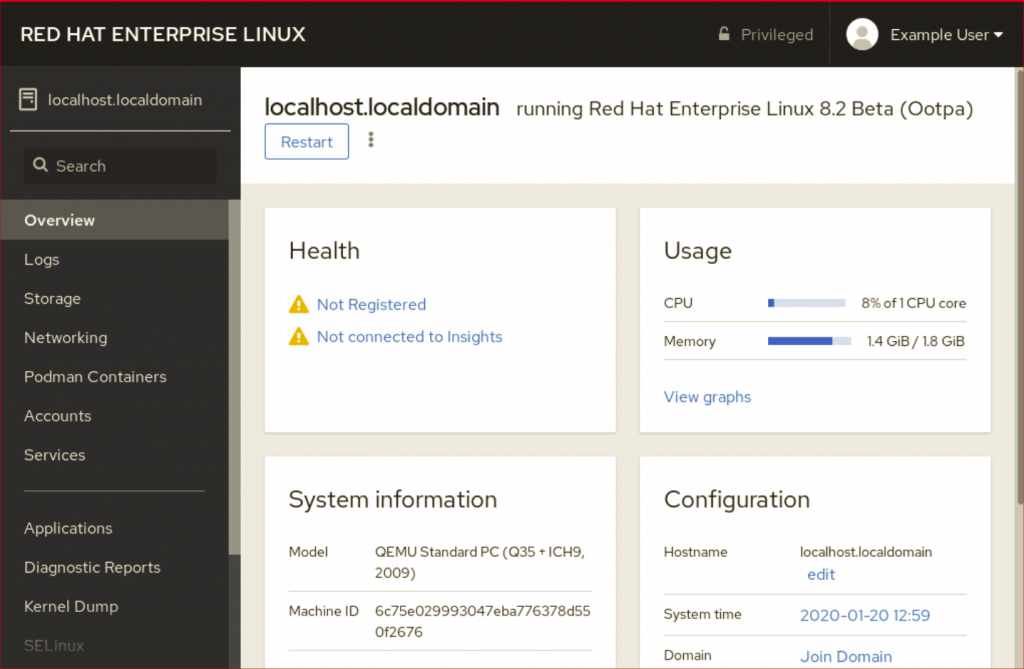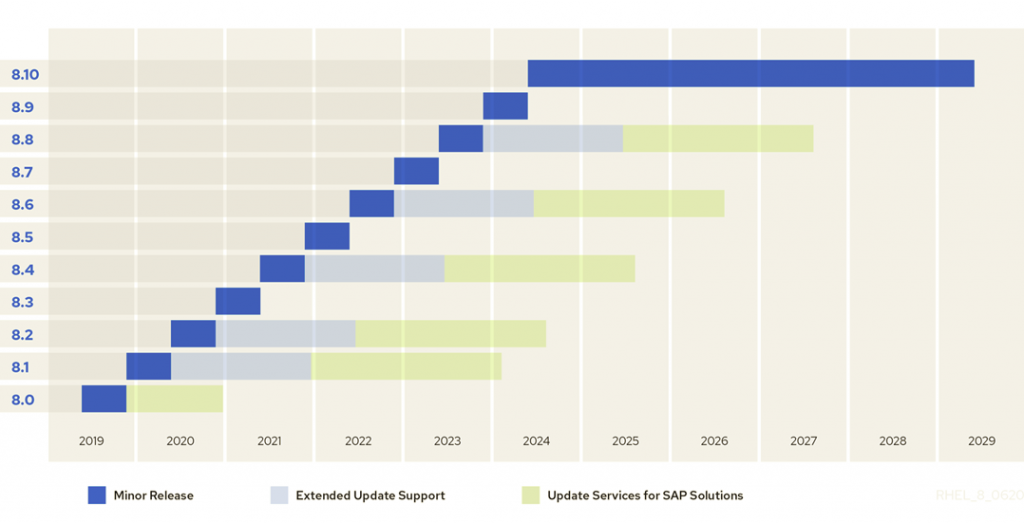Red Hat Enterprise Linux 8 has officially released on May 7, 2019.
It’s more an evolution rater than a revolution: it was a big step from RHEL 5 to 6, and there was a huge leap from 6 to 7. But now the gap is more manageble, also in the upgrade procedure.
One big news of RHEL 8 is Cockpit, a web management console adopted also by several other Linux distributions.
By default it’s not enabled, the service will work on TCP port 9090 and you can use a tradition web browser as a client.
To enable the service, execute the following command:
sudo systemctl enable --now cockpit.socketMany upgrades are significant, including:
- Kernel 3.10.0 to 4.18.0
- GCC 4.8.5 to 8.2.1
- Python 2.7.5 to 3.6.6
- PHP 5.4.16 to 7.2.11
- OpenSSL 1.0.2k to 1.1.1
Also scalability has been increased: RHEL 8 supports 4 PB of RAM and 128 PB of virtual memory (RHEL 7 only 64 TB of RAM and 256 TB of virtual memory).
For the filsystem, RHEL 7 used XFS by default, but included Btrfs or the B-tree File System as a “technology preview”, but Red Hat deprecated Btrfs at the 7.4 release, and RHEL 8 does not support it.
For package management, DNF replaces YUM. But thanks to symbolic links, all your yum syntax still does the same things. It just runs much faster.
About the planned product support see this table:













